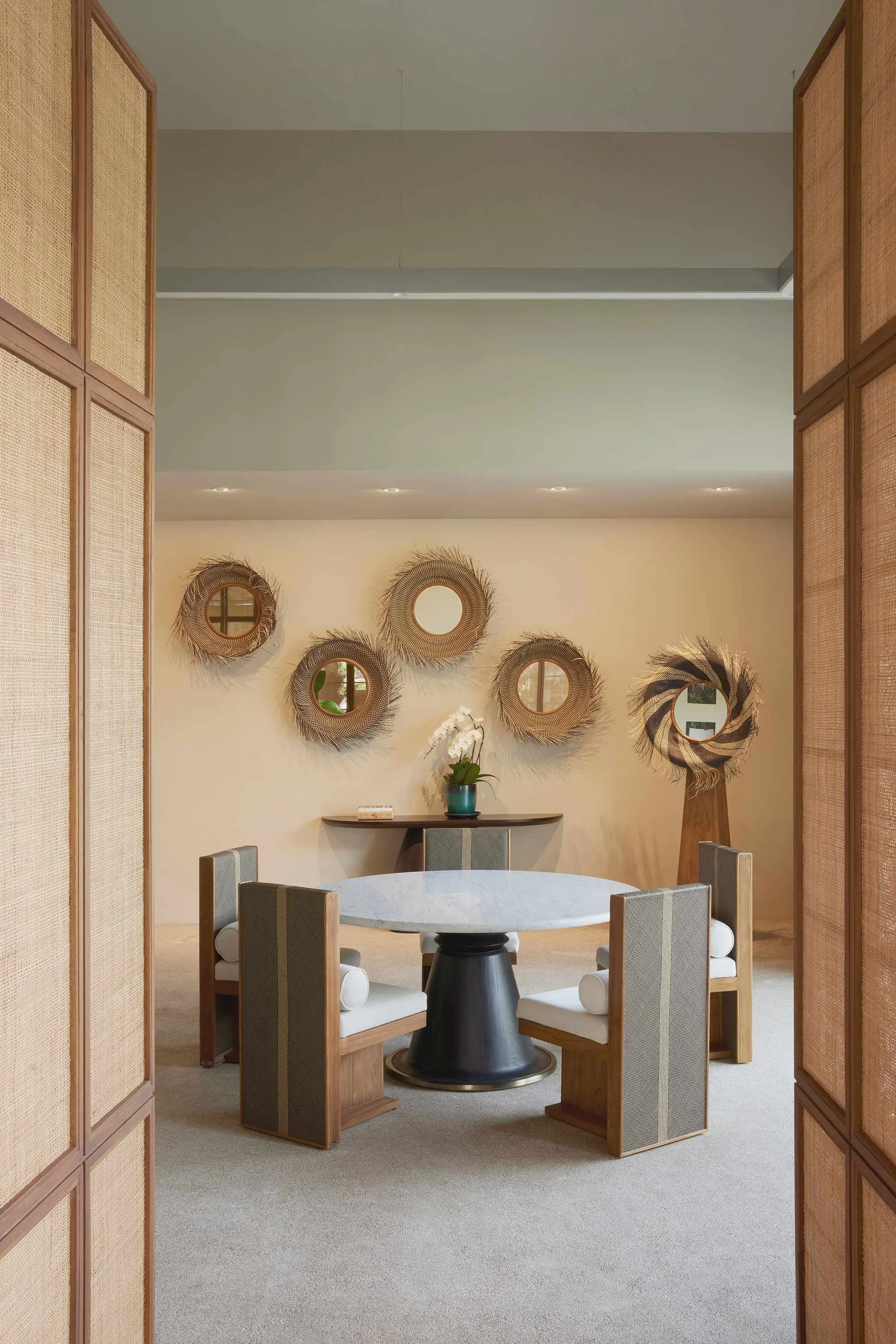Indonesia’s AlvinT Lays New Roots
Image by Christopher Octaviano
Jakarta-based designer Alvin Tjitrowirjo and his brand AlvinT draw on Indonesia’s rich heritage, creating new forms that reference the country’s culture and material traditions
Indonesia, a country with a longstanding craft heritage, is one of the world’s largest furniture manufacturing centres, yet its designers and makers haven’t quite had their moment in the sun. This is a nation that has developed numerous products for internationally recognised brands, but is lesser known on the global stage for its ingenuity and artistry. It was this chasm that led Jakarta-based designer Alvin Tjitrowirjo to establish his eponymous furniture brand AlvinT in 2006, with the aim of creating new and unique forms that take inspiration from and reference Indonesia’s rich culture. The Dahan Bench is a case in point: crafted by hand from rattan — Tjitrowirjo’s trademark medium — it’s a fresh, sculptural take on natural materials and local craft. And it speaks to cultural and environmental patterns of consumerism, overconsumption and value — concerns the designer never shies away from.
But contemporary designs are still often perceived as ‘less Indonesian’ when compared to traditional handicrafts, something Tjitrowirjo hopes to change. ‘AlvinT offers a new lens on what Indonesian design can be, while valuing high-quality materials and intricate craftsmanship,’ he says. With each original piece, he hopes to help establish the country as a hub for innovative furniture-making. ‘We use design and craft as an instrument to reconnect people, place and culture,’ he continues. ‘We’re concerned with the disconnect between our traditional culture and the ongoing modern design movement, which seems to separate Indonesia’s identity into either traditional or contemporary. We love to challenge this common dichotomy and explore the in-between.’
This is partly why rattan is Tjitrowirjo’s material of choice. The climbing plant is deeply rooted in Indonesian culture, and locals have long used the reeds and outer bark to make everyday and cultural objects. It is also a source of livelihood for many artisans in the country; Indonesia is the largest rattan producer in the world, contributing 70% of the world’s rattan raw materials.
Image by Christopher Octaviano
Image by Martin Westlake
Although rattan has gained global prominence in North America and Europe for its warmth and strength, the material remains underappreciated, even among Indonesians. In fact, with the proliferation of plastic, rattan weaving has come under threat as younger generations in Indonesia are less inclined to learn the craft.
Rattan is still often thought of as a single species plant, although there are more than 600 variants, and it is also often mistaken for bamboo. Nevertheless, therein lies the opportunity for innovation. ‘It’s not only an under-researched material, but also, rattan manufacturing hasn’t changed much in the last 75 or so years,’ says Tjitrowirjo. Rattan is fast growing, durable and flexible, and its these qualities (and the potential they hold) that Tjitrowirjo’s pieces highlight.
It’s also why he opened the AlvinT Gallery in Jakarta’s Indonesia Design District last year, where the designer hopes to showcase rattan in a new light. Anchoring the room is a ‘material table’ that details how the material harvested from the forest floor and transformed into handsome furniture. As a frontier space that connects the past and present, the gallery also hosts thematic exhibitions, with a focus on collaborative works, craft communities and like-minded brands.
‘We designed it as a gallery, but we want to go beyond merely showcasing our products. We want to ignite curiosity, provoke conversation and create meaningful connections with our artisans and audience,’ he says. ‘We hope to offer new perspectives on seeing, understanding and respecting our own cultural identity and values through design.’ It’s here that Tjitrowirjo’s advocacy for Indonesian design finds full expression, by showing that it’s possible to put down roots and break new ground at the same time.



